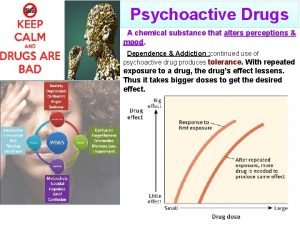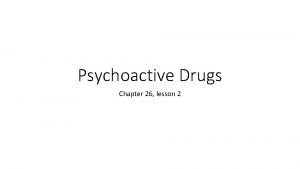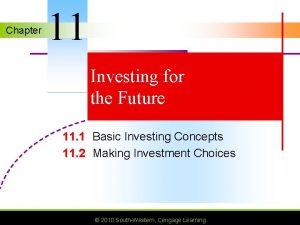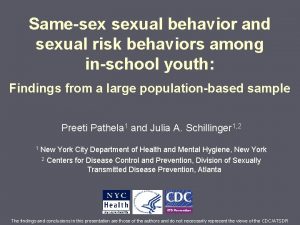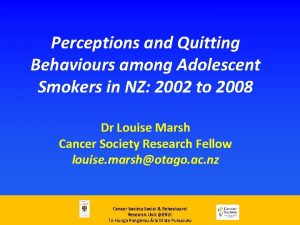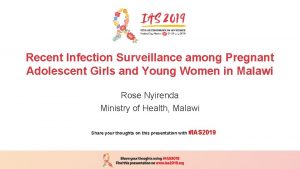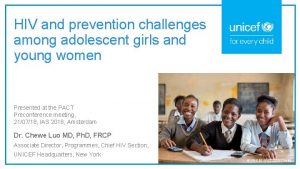Measuring perceptions of sexual risk among adolescent girls







- Slides: 7

Measuring perceptions of sexual risk among adolescent girls and young women taking Pr. EP: A new qualitative method using visual timelines in HPTN 082 Scorgie F, Khoza N, Delany-Moretlwe S, Mangxilana N, Atujuna M, Musara P, Makhale L, Matambanadzo K, Velloza J, Celum C for the HPTN 082 Study Group @HIVptn ABSTRACT No: A-1077 -0293 -02853 Share your thoughts on this presentation with #IAS 2019

• Use of Pr. EP for HIV prevention is linked to ‘seasons of risk’ (Mugo et al. , 2016; Namey et al. , 2016) • AGYW may underestimate their HIV risk – impact Pr. EP uptake and adherence • Traditional interview methods to understand HIV risk perception are limited by social desirability bias & focus on current partnerships • We adapted a novel approach to elicit perceptions of risk in the context of sexual histories

Method • A ‘participant-empowered’, ‘action-orientated’ approach, inspired by Goldenberg et al. , 2016 • Visual data serves as an anchor for complex and detailed narratives • Promotes more dialogue • Enhances depth and nuance in the data

Visual relationship timelines • ‘Relationship timelines’ were collected from 31 AGYW (16 -25 yrs) participating in serial IDIs in a qualitative sub-study of HPTN 082 • Timelines captured all relationships from sexual debut to current partner • While participants drew timelines, an interviewer probed about key risk factors in each relationship, incl. : • • condom use intimate partner violence substance use concurrent partners • To assess perceptions of HIV risk, participants assigned a numerical risk score from 1 (least risk) to 5 (highest risk) to each relationship.

Examples of relationship timelines drawn by HPTN 082 study participants in Johannesburg (above) and Harare (right)

Key findings • Creating the timelines gave AGYW new and valuable insights into lifetime exposure to risk • Their calibration of HIV risk differed from that used in HIV prevention messaging: – Known or suspected partner infidelity condom use, downplayed – Affirming, egalitarian relationships – Participants “in love” with partner other risk factors (e. g. low transactional sex) HIV risk underestimated • Pr. EP initiation counselling needs to build young women’s skills to accurately assess HIV risk • The relationship timeline method may help AGYW visualise their risk exposure over time and align Pr. EP use with periods of high risk.

Acknowledgements We thank study participants for trusting us with the information presented here. We are grateful to the teams at the study sites in Johannesburg and Cape Town, South Africa, and Harare, Zimbabwe, and the HIV Prevention Trials Network that supported data collection and management for this work. We also thank Michelle Bulterys, Miria Chitukuta, Sanele Gumede, Sybil Hosek, and Lumka Nobula for their contributions.
 Market risk assessment
Market risk assessment A chemical substance that alters perceptions and mood
A chemical substance that alters perceptions and mood Trust your perceptions
Trust your perceptions Drugs that alter moods thoughts and sense perceptions
Drugs that alter moods thoughts and sense perceptions Psychedelic drugs that distort perceptions and evoke
Psychedelic drugs that distort perceptions and evoke Drugs that alter moods, thoughts, and sense perceptions
Drugs that alter moods, thoughts, and sense perceptions The spreading of risk among many types of investments.
The spreading of risk among many types of investments. Measuring risk
Measuring risk

